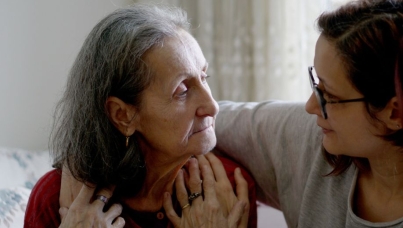SNP out in front in Scotland as Starmer’s satisfaction ratings fall
Ipsos’ newly relaunched Scottish Political Monitor, in partnership with STV News, puts the SNP out in front in Scotland on 31% of the vote if an immediate General Election was held. The poll underlines how dramatically some parties’ fortunes have changed in Scotland since the General Election. Labour have fallen out of favour with many Scottish voters while in government at Westminster, with 22% now saying they would vote for the party, 13 points lower than the party achieved last July. In contrast, Reform UK are very much on the up, with a 16% vote share putting them 9 points higher than the 7% they achieved at the General Election.
This is Ipsos’ first published voting intention figure in Scotland since June 2024, with fieldwork taken 12th-18th June 2025. After a comprehensive internal review, these new figures are collected via Ipsos UK’s online KnowledgePanel, based on “gold standard” random probability sampling, where potential participants are recruited offline.
Our headline estimate of General Election voting intention is:
- SNP: 31%
- Labour: 22%
- Reform UK: 16%
- Conservatives: 10%
- Scottish Green Party: 10%
- Liberal Democrats: 9%
- Alba Party: 1%
- Other: 1%
Half of those who supported Labour at the General Election intend to switch to other parties or are undecided as to which party to vote for. Parties benefiting from voters switching from Labour are Reform UK (17% of Labour 2024 voters now say they would back Reform UK), the SNP (9% of Labour 2024 voters now intend to vote SNP), the Scottish Green Party (7%) and the Liberal Democrats (6%).
The SNP are also in pole position when it comes to Scottish Parliament voting intention, on 34% of the constituency vote. If replicated at the Holyrood elections next May, however, this would be a weaker performance than in 2021 when the party won 47.7% of the constituency vote. Labour are in second place on 23% vote share, ahead of Reform UK on 14%. The same three parties top regional list voting intentions, with the SNP on a 26% vote share, Labour on 22% and Reform UK on 16%.
Our headline estimate of Holyrood constituency voting intention is:
- SNP: 34%
- Labour: 23%
- Reform UK: 14%
- Conservatives: 10%
- Liberal Democrats: 9%
- Scottish Green Party: 9%
- Alba Party: 1%
- Other: 1%
Our headline estimate of Holyrood regional list voting intention is:
- SNP: 26%
- Labour: 22%
- Reform UK: 16%
- Scottish Green Party: 15%
- Conservatives: 10%
- Liberal Democrats: 8%
- Alba Party: 2%
- Other: 1%
Issues facing Scotland
The most important issues that the public see as facing Scotland today are: healthcare/NHS (69%), inflation/the rising cost of living (52%), public services generally (42%), a lack of faith in politicians, political parties or government (41%), and poverty/inequality (40%). The question of Scottish independence does not appear in the top 10 issues for the Scottish public, although it remains important for SNP voters - 50% of those who say they would use their constituency vote for the SNP mention it as a very important issue facing Scotland, compared to 24% of the public overall.
Trust in the parties
The SNP is the party most trusted by the public to grow Scotland’s economy (25%), manage the NHS in Scotland, manage education and schools, and tackle the cost of living crisis (all 24%). This contrasts with the situation in Ipsos’ previous poll in June 2024, when trust was closer-run between the SNP and Scottish Labour, with the parties neck and neck on the NHS and education, Labour enjoying a small lead over the SNP on tackling the cost of living crisis and the SNP leading Labour on growing Scotland’s economy. The SNP is also the most trusted party to stand up for Scotland’s interests, by some distance - 37% trust the party to do this, compared with 12% who trust Scottish Labour to do the same.
Views on party leaders
None of the party leaders asked about in Ipsos’ poll receives a positive net approval rating from the public. The public are more dissatisfied than satisfied with First Minister John Swinney. A third (32%) say they are satisfied with the way he is doing his job, while 49% are dissatisfied – a net approval rating of -17. Just over a quarter (27%) are satisfied with Scottish Labour leader Anas Sarwar, and 45% are dissatisfied – a net approval rating of -18. Among their own parties’ voters, however, those who voted SNP at the 2024 General Election are more satisfied with Swinney (63% satisfied) than those who voted Labour are with Sarwar (45% satisfied).
Prime Minister Keir Starmer’s approval ratings have fallen markedly compared with a year ago. While 22% of the Scottish public are satisfied with the way he is doing his job, 64% are dissatisfied, giving a ‘net’ satisfaction rating of -42. A concerning sign for Starmer is that even among voters who supported Labour at the 2024 General Election, almost half – 49% - say they are dissatisfied with the job he is doing as Prime Minister. While Reform UK’s Nigel Farage is also unpopular among the Scottish public, his approval ratings are not quite as low as Starmer’s – 24% say they are satisfied with his performance and 54% that they are dissatisfied, a ‘net’ satisfaction rating of -30.
Independence
The poll underlines that the Scottish public remain divided on the constitutional question. Among those likely to vote either Yes or No in an immediate referendum, 52% say they would vote Yes and 48% No.
Emily Gray, Managing Director of Ipsos in Scotland, commented:
These new results show how dramatically Scotland’s political landscape has shifted compared with a year ago. Labour’s support in Scotland has declined considerably since the General Election, and on this evidence Reform UK and the SNP are both benefiting from voters switching allegiance from Labour. A key question for Labour is whether it will be able to win voter support back ahead of next May’s Holyrood elections. While the SNP will be pleased that the results show them leading on both Holyrood and Westminster voting intentions, there are also warning signs for the party. Their vote share still lags behind what the party achieved at the last Holyrood elections in 2021, and John Swinney’s approval ratings are lower than they were a year ago. Meanwhile, Reform UK have made significant strides in Scotland to become the third largest party in both Westminster and Holyrood voting intentions. While neither Nigel Farage nor Keir Starmer are popular amongst the Scottish public at present, Starmer’s ratings have now fallen behind Farage’s, far from the situation the Prime Minister would want as he marks his first anniversary in Downing Street this week.
Technical note:
- Ipsos interviewed a representative probability sample of 1,066 adults aged 16+ across Scotland, via the Ipsos UK KnowledgePanel. Data was collected online between 12th – 18th June 2025.
- Panel members are recruited via random probability sampling, by sending letters to randomly selected addresses, which invites them to join an online panel. This approach means every household in the UK had a known and non-zero chance of being selected to join the KnowledgePanel. Those who are digitally excluded are provided with a tablet and free, restricted data connection. A sample of 1,909 panellists aged 16+ in Scotland were invited to take part in the survey. The sample was stratified by qualifications and vote at the 2024 general election (as collected immediately after the election). The achieved sample was weighted in two stages:
- Design weights were applied to correct for the unequal probabilities of a person being selected for a survey, notably residents in smaller households have a higher chance of being selected.
- Calibration weights were applied through rim weighting to correct for differential non-response. Data was weighted to the adult population profile on age and gender, Scottish Parliament region, ethnicity, qualifications, work status and work sector (public sector/other), social grade, area deprivation, number of cars in household, and newspaper readership (print and digital). Population targets were obtained from the 2022 Census, ONS population estimates and other large-scale probability surveys.
- For Westminster General Election voting intention, a two-part question is used with prompting on major parties (Conservatives, Labour, Liberal Democrats, Scottish National Party, Reform UK or another party – if a respondent says they would vote for another party we ask which party that would be) and a follow-up “squeeze” question of those who were undecided or refused to the first question. Only those aged 18 and above are asked the voting intention questions. A turnout filter is used based on two questions (current stated likelihood to vote and previous voting behaviour).
- For Scottish Parliament voting intention, a similar two-part question is used for both constituency and regional list voting intention, with prompting on major parties (the list of parties prompted for differs for constituency and regional list, as not all parties stand candidates on both) and a follow-up “squeeze” question of those who were undecided or refused to the first question. All those aged 16+ are asked the voting intention questions. A turnout filter is used based on two questions (current stated likelihood to vote and previous voting behaviour).
- For independence referendum voting intention, a single question is asked to all those aged 16+, with the same wording as was used in the 2014 independence referendum. A turnout filter is used based on current stated likelihood to vote in an immediate referendum about Scotland’s constitutional future.
- All polls are subject to a wide range of potential sources of error. On the basis of the historical record of the polls at recent general elections, there is a 9 in 10 chance that the true value of a party’s support lies within 4 points of the estimates provided by this poll, and a 2 in 3 chance that they lie within 2 points. This is especially important to keep in mind when calculating party lead figures.



